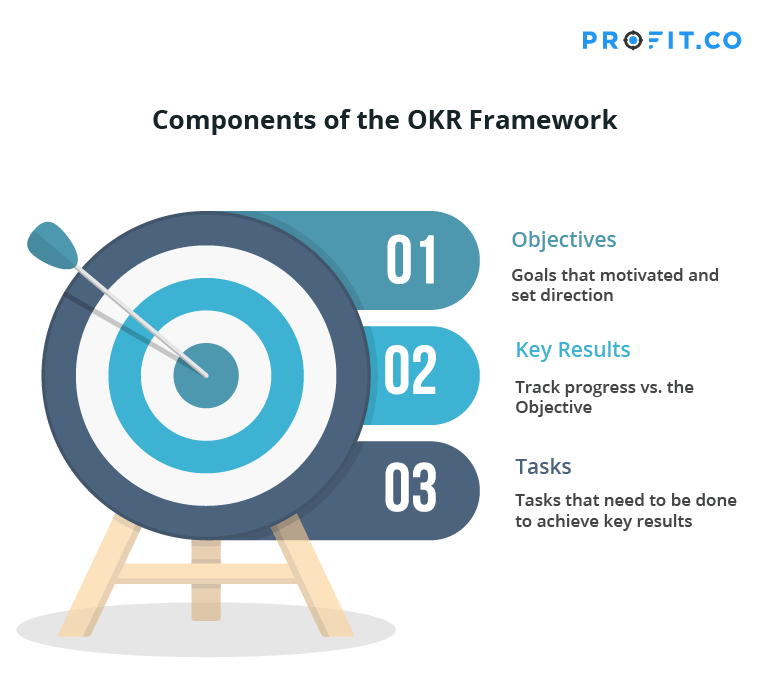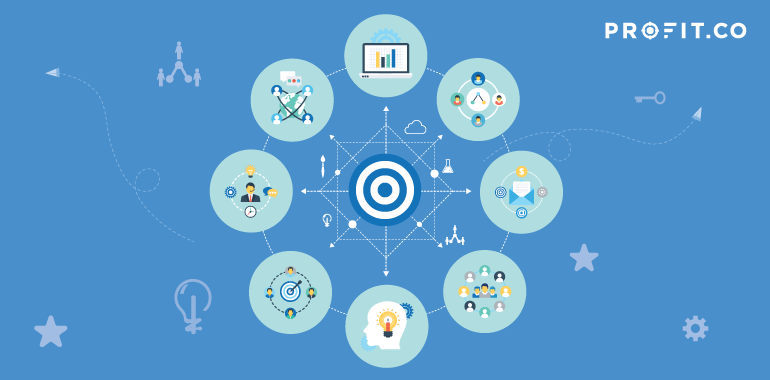The OKR framework was made popular by Google, and it credits much of its success to the goal setting model. Google has been using OKRs right from its inception, when their main office was a garage and they had only a handful of innovative employees.
Deciding what not to do is as important as deciding what to do.
Let’s take a look at how the OKR framework works, why so many big companies use it, and how an organization can use this OKR framework to improve and implement its business strategy.
OKRs, stands for Objectives and Key Results, is a goal-setting framework that has gained significant popularity in the business world. Introduced by Andy Grove at Intel and later popularized by John Doerr, OKRs provide a structured approach to aligning and achieving organizational objectives.
What is the OKR framework?
The OKR framework consists of two main components: objectives and key results. Objectives are ambitious, qualitative statements that describe what an organization or team aims to achieve. They are meant to be inspirational, aspirational, and drive focus and alignment. Key results, on the other hand, are measurable outcomes that define how progress towards the objectives will be measured.
OKR (Objectives and Key Results), is a framework used for setting business goals and defining their trackable outcomes.

Key characteristics of OKRs implementation framework
Depending on the nature of the organization and the business, OKRs will differ. But there are certain characteristics that OKRs of all organizations must have, irrespective of what business it is:
- OKRs must be tied to larger company goals: This makes it possible for the organization, teams, and individuals to work with alignment towards a common goal
- OKRs must be clear and concise: OKRs reflect the most important company goals, so individual employees should be able to memorize these without referring to their list.
- OKRs must address the big picture: Goals should be ambitious and challenging for the team to achieve– but should also focus on the most important strategic goal for the business.
- Key Results must have an owner: assigning key results to departments, teams, or individual employees ensures that everyone knows who is responsible for fulfilling a target and eliminates confusion.
- OKRs should be measured with a standardized scoring system: Measuring OKRs consistently allows users to evaluate how they performed from one quarter to the next.
- OKRs should be challenging and ambitious: Encouraging employees to set stretch OKRs can help push employees to accomplish more without penalizing them if they fall short.
What are the benefits of Objectives and Key Results (OKRs)
Let’s take a look at some of the strategic advantages that the OKR framework delivers:
1. OKRs align individual team members’ tasks around a shared company goal.
One benefit of OKRs is that all goals are aligned with larger company goals, ensuring that each employee within a business is staying focused on the most important projects. This helps everyone remain focused throughout the quarter and keep tabs on their own tasks to ensure they stay aligned with the larger company objectives.
2. Objectives and key results help boost employee engagement.
When employees don’t know what the purpose of their project or goal is, it’s very likely that they will lose their enthusiasm for the project. The decrease in employee engagement slows productivity and prevents the team and its members from putting in their best efforts. OKRs can help everyone understand how their individual efforts support the key results of the company.
3. OKRs foster team collaboration and chemistry.
When there are common, overarching objectives to unite everyone under a common goal, departments and teams must make contributions alongside other teams, which require them to interact and collaborate. In the process of this collaboration, a greater sense of camaraderie and community is fostered within a company.
How to use OKRs
1. Turn user needs or problems into OKR objectives.
OKR Framework can be very useful when it comes to Product Planning. Convert user needs and problems into Objectives and create key results as metrics to address and measure the issues.
2. OKRs help channelize the team’s focus on accomplishing objectives
The OKR framework helps teams focus on accomplishing their most important goals and objectives. Each quarter, teams and individuals should limit themselves to between three and five objectives. This rule of five helps each sector of the business define what is most important for them to achieve. Key results are then defined to help measure the success of each objective with concrete target numbers, or percentage and milestone-based sequences.
3. Review OKRs with all concerned teams on a regular basis
Once the teams have decided on a set of OKRs for the OKR roadmap, check-in with the teams on a regular basis to check the progress of every key result associated with a specific objective. Doing this has a few benefits:
- This will ensure every team member, the leaders, and the organization are all on the same page and are working towards a common goal.
- This helps leaders know early on if the objectives that were set are too hard to achieve or don’t address what they want to accomplish– catching this early gives leaders enough time to modify the objectives.
- It also helps ensure smooth, regular progress and work out any issues that individuals are facing.
The OKR framework works
The OKR framework, when used effectively, has brought success to many industry leading companies.
- Like so many successful companies, you can implement OKRs to help you plan goals for individuals and teams, track progress in relation to the plan, and coordinate priorities and accomplishments between teams.
- It also helps people remain focused on the goals that are important, and set their priorities right by not getting distracted by tasks that are less important.
The best way to succeed with OKRs is to use agile OKR software! Profit.co offers a customizable platform to help you focus on your most important goals, measure your progress, and achieve more in your business. You can try Profit.co completely free for thirty days, or book a free demo with our OKR experts to see how Objectives and Key Results can help you!
Ready to start your OKR Journey for FREE?

